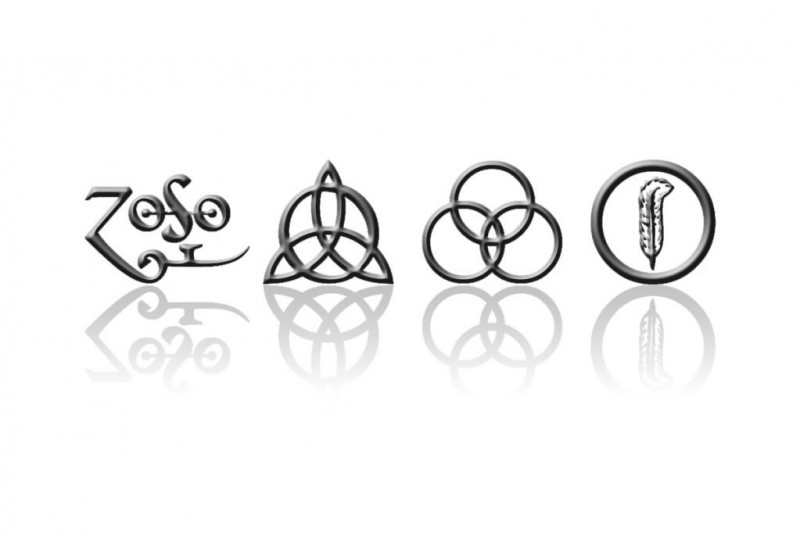
In a world filled with diverse cultures and rich histories, symbols have played a pivotal role in conveying ideas, beliefs, and emotions. These symbols transcend language barriers, serving as universal tools of communication. Join us as we delve into the fascinating history and significance of some of the most well-known symbols in the world.
The peace sign, a simple circle with three lines, has become synonymous with the desire for harmony and the end of conflict. Created in 1958 by British artist Gerald Holtom, it gained prominence during the anti-nuclear movement of the 1960s. The peace sign is a powerful reminder of the human pursuit of peace and unity.
Interestingly, variations of the peace sign exist in different cultures. In Japan, a similar symbol represents "divine intersection" and is associated with temples. This demonstrates how symbols can take on distinct meanings in various contexts.
The heart symbol, a universal representation of love and affection, has a long history dating back to ancient civilizations. Its iconic shape resembles the human heart, making it a powerful symbol of emotions. This simple symbol has touched the hearts of people worldwide.
The heart symbol's origins can be traced to the ancient Greeks, who believed the heart was the seat of human emotions. Over time, it evolved, and today, it is an integral part of expressing love, passion, and care.
The cross, a vertical line intersected by a horizontal line, holds immense significance in Christianity. It represents the crucifixion of Jesus Christ and serves as a symbol of faith, sacrifice, and redemption for billions of Christians worldwide.
Interestingly, the cross is not exclusive to Christianity. It appears in various forms in other cultures, such as the ankh in ancient Egyptian symbolism and the swastika in Hinduism and Buddhism. This demonstrates how symbols can transcend their origins.
The Yin and Yang, an ancient Chinese symbol, represents the dualistic nature of existence. It symbolizes the balance between opposing forces, such as light and darkness, and the harmony that results from their interplay.
Rooted in Taoism and Confucianism, the Yin and Yang symbolize the essence of Chinese philosophy. It reminds us of the ever-changing and interconnected nature of life, encouraging us to seek harmony and balance.
The Star of David, a six-pointed star, is a prominent symbol in Judaism. It represents the Jewish identity and unity among the Jewish people. Its history dates back to ancient times, and it has become a powerful emblem of Jewish culture.
Throughout history, the Jewish people have faced adversity and persecution. The Star of David has symbolized their resilience and determination to maintain their identity and faith.
The Om symbol, often spelled as "Aum," holds deep spiritual significance in Hinduism and other Indian religions. It represents the sacred sound that is believed to encompass the essence of the universe.
The Om symbol is frequently chanted during meditation to attain a higher state of consciousness and connect with the divine. It reminds us of the spiritual journey and the quest for inner peace.
The Eye of Horus, an ancient Egyptian symbol, is often associated with protection and healing. It is believed to ward off evil and bring blessings to those who wear it as an amulet.
In ancient Egyptian mythology, the Eye of Horus was a powerful protective symbol associated with the god Horus. Today, it continues to be a symbol of safeguarding and well-being.
In recent times, the equality symbol, represented by an equal sign, has gained prominence as a symbol of social justice and LGBTQ+ rights. It signifies the pursuit of equality and inclusivity.
The equality symbol serves as a reminder that all individuals, regardless of their gender, sexual orientation, or background, should be treated with respect and given equal rights and opportunities.
National flags are powerful symbols of a country's identity and pride. Each flag has a unique combination of colors and symbols that reflect the nation's history, values, and aspirations.
Flags have the remarkable ability to unite people and instill a sense of belonging. They are raised in celebrations, flown during national events, and draped over caskets of fallen heroes, symbolizing the bond between citizens and their homeland.
Symbols have a remarkable ability to transcend language and cultural barriers, conveying complex ideas and emotions with simple imagery. They connect us to our past, guide us in the present, and inspire hope for the future.
In a world filled with diversity and complexity, symbols serve as a source of unity and understanding. They remind us of our shared humanity and the power of common symbols to bridge divides.
In conclusion, symbols are not mere marks or shapes; they are the language of the human experience. From peace signs to national flags, these symbols encapsulate our emotions, beliefs, and values. They are a testament to the enduring power of simplicity in communication and the universal desire for connection and understanding.
Cushing's Disease: What You Need to Know
Understanding Painful Urination: Causes and Remedies
The most common medication errors to avoid